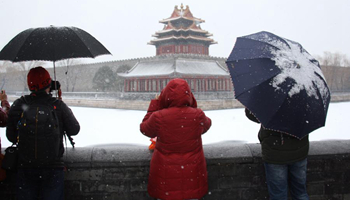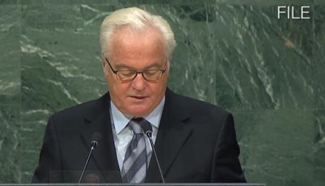SAN FRANCISCO, Feb. 21 (Xinhua) -- The University of California, Berkeley, and Google Inc. are looking for amateur astronomers and photographers to document and memorialize the August 21 total solar eclipse, which is believed to be one of the most anticipated events in a lifetime.
The Eclipse Megamovie Project, announced Tuesday by UC Berkeley, calls for more than a thousand citizen scientists to upload their photos of the solar eclipse to be stitched together into a "megamovie" documenting the path of totality from landfall in Oregon, in the U.S. Pacific Northwest, until the moon's shadow slips over the Atlantic Ocean off South Carolina in the U.S. east coast.
The volunteers will be selected and trained by the Eclipse Megamovie Project team, but anyone with a smartphone can also contribute, said the university in a news release, adding that the public will be able to download an app, expected to debut in April, to take time-coded photos of the eclipse and upload them for inclusion in a second, though much lower-resolution movie. The team also hopes to include raw images from any source in its archive.
No one on the ground will see the total eclipse for more than 2 minutes and 40 seconds, depending on how close they are to the center of the path of totality. Even an airplane flying along the path of totality can only capture at most a four- to five-minute movie, since the moon's shadow moves along the ground at up to 1,500 miles, or 2,400 kilometers, per hour.
However, the images collected by the Megamovie's volunteer team will be turned into a 90-minute eclipse movie. Their uploads are expected to be about a gigabyte per person, with thousands of people contributing, which adds up to terabytes of data.
Both movies will be scientifically useful, said UC Berkeley solar physicist Hugh Hudson, who proposed the Megamovie idea in 2011 along with Scott McIntosh of the National Center for Atmospheric Research's High Altitude Observatory in Boulder, Colorado.
When Google's Making & Science initiative heard about the idea, they were eager to join the project.
While the corona can be studied with telescopes that block the brightness of the solar disk, the thin chromosphere is lost in the glare, so questions remain about what in the chromosphere generates the jets of plasma. "We'll be collecting this level of data for the first time, from millions of observers, and it will be a valuable archive."
Amateur astronomers and knowledgeable photographers who want to contribute to the high-resolution movie can sign up at https://eclipsemega.movie/ for project updates and information about the application process. If selected to participate, they will receive an exclusive pin and recognition in the credits for the Eclipse Megamovie Project.
The first version of the Megamovie should be available online several hours after the eclipse ends at 1:49 p.m. local time on the U.S. east coast.












